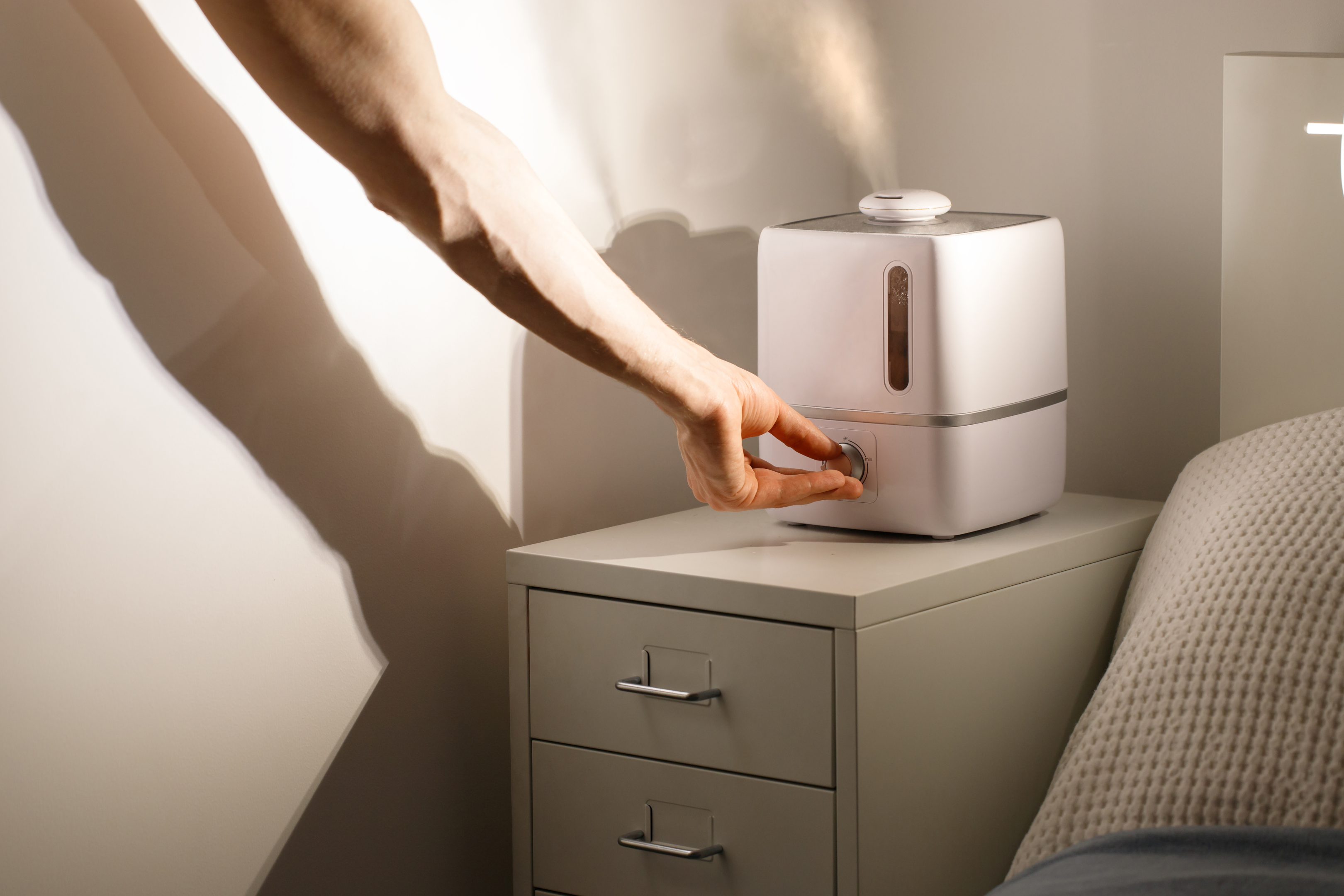Dr. Matthew Olesiak continues to make a significant impact in the medical field through his work at SANESolution and his dedication to evidence-based practices.
Get Rid of Throat Congestion Relief
Are you tired of constantly dealing with throat congestion and searching for throat congestion relief? Look no further! We’ve got you covered with nine natural remedies to help you breathe easier and feel better.
Say goodbye to the discomfort and irritation caused by excess mucus and phlegm, and discover how simple changes in hydration, air quality, and even your diet can make a world of difference. Let’s embark on this journey towards improved respiratory health and a more comfortable life with throat congestion relief. Throat health awaits!
If you want to dive deeper into throat health knowledge and guides, check out, Natural Throat Discomfort Remedies for Fast Relief and A Comprehensive Guide to Throat Gargle: Benefits, Recipes, and More articles!

- New Report Says Your Brain Could Be the Key to Reducing Phlegm Over 50
- Doctor's "Leave The Throat Phlegm Behind" Tutorial Goes Viral With People Over 50
- Can You Relieve Throat Phlegm and Coughing In 60 Seconds A Day? This Doctor Says Yes
- How To Banish Phlegm When 50+ (Do This Every Day)
Short Summary
- Stay hydrated and maintain optimal humidity levels to reduce throat congestion.
- Incorporate herbal teas, broths, saline nasal spray, bromelain found in pineapple and steam inhalation with essential oils for enhanced benefits into daily routine.
- Avoid irritants such as smoke, dust & pollen. Incorporate throat cleaner with antioxidant rich fruits & vegetables plus omega 3 fatty acids to support respiratory health.
Throat Congestion #1: Stay Hydrated

Did you know that staying hydrated plays a crucial role in reducing mucus production and providing relief from throat congestion? Drinking enough water helps mucus thin, making it easier to expel. To maintain proper hydration, aim for at least eight glasses of water per day.
But not all fluids are created equal when it comes to alleviating throat congestion. It’s best to opt for water and avoid beverages containing alcohol or caffeine, as they may contribute to excess mucus production and worsen your condition.
Benefits of Staying Hydrated

Hydration is essential for overall health and plays a vital role in controlling body temperature, lubricating joints, eliminating toxins, and supporting the respiratory system. By staying hydrated, you can aid in relieving throat congestion by thinning mucus and promoting the health of mucus membranes.
To ensure adequate hydration and prevent upper respiratory tract infections, consume ample amounts of water, eat foods with high water content, and avoid dehydrating beverages such as alcohol and caffeine.
How Much Water Should You Drink Daily?
To keep your respiratory system functioning optimally and prevent chronic obstructive pulmonary disease (COPD) and chronic lung disease, it is recommended to consume at least eight glasses of water daily. The actual amount of water intake may vary depending on factors such as age, sex, weight, and activity level, but proper hydration is essential for overall health and may help reduce the risk of lung cancer and other respiratory issues.
By keeping your body well-hydrated, you’re not only supporting your respiratory health but also helping to reduce mucus and prevent the production of more mucus.
Best Fluids for Throat Congestion Relief
When it comes to choosing the best fluids for throat congestion relief, warm, non-caffeinated beverages such as herbal teas and broths are your best bet. These soothing drinks can help promote hydration and thin mucus, making it easier to expel and providing relief from congestion.
Another helpful remedy is a saline nasal spray, which can alleviate congestion and thin mucus as well. If you’re looking to include a natural supplement, bromelain found in pineapple may be beneficial in opening up obstructed airways and providing relief for both upper and lower respiratory tract congestion.
Use a Humidifier to ease throat congestion

Using a humidifier can add much-needed moisture to the air, which in turn can help reduce mucus production and provide relief from throat congestion.
By maintaining optimal humidity levels in your home, you can create a more comfortable environment for your respiratory system and ease symptoms associated with excess mucus and phlegm.
Types of Humidifiers
There are several types of humidifiers available, including cool mist and warm mist humidifiers. Both types can help alleviate throat congestion by adding moisture to the air.
Cool mist humidifiers, in particular, are recommended as they create a more comfortable sleeping environment by adding humidity to the air, aiding in keeping your nasal passages and throat moisturized and reducing the formation of mucus.
Tips for Using a Humidifier
To ensure optimal performance and prevent mold growth, it’s essential to manage humidity levels when using a humidifier. The ideal humidity level should be between 40-60%.
Use distilled water to prevent mineral buildup and decrease the possibility of bacteria and mold growth. Clean your humidifier regularly, at least once a week, to prevent bacteria and mold growth. Also, replace the filters every two to three months to ensure optimal functioning.
Alternatives to Humidifiers
If you don’t have access to a humidifier, there are other ways to find relief from throat congestion. A warm, steamy shower can be an effective alternative for adding moisture to the air and helping to clear mucus and soothe airways.
Another option is to try eucalyptus steam inhalation (see section 4.3), which can provide similar benefits in alleviating respiratory symptoms and promoting overall respiratory health.
Gargle Salt Water

Gargling with warm salt water is a time-tested remedy for throat congestion. This simple yet effective solution can help soothe a sore throat, loosen mucus, and provide relief from throat congestion.
By incorporating this easy practice into your daily routine, you can significantly improve your respiratory health and feel better in no time.
How to Prepare a Salt Water Solution
Preparing a saltwater solution for gargling is quick and easy. Simply mix 1/2 teaspoon of salt in 8 ounces of warm water.
Be sure to use warm water, not hot, to avoid irritation or burns when gargling.
Frequency of Gargling
For optimal throat congestion relief, it’s recommended to gargle with salt water two to three times daily. Consistent gargling can help reduce inflammation and promote the expulsion of phlegm, leading to a significant improvement in your respiratory health.
Gargling with salt water is a simple and effective way to reduce throat congestion and improve your respiratory health. It can help reduce inflammation and expel phlegm, leading to a significant improvement in your overall health.
Benefits of Salt Water Gargling
Salt water gargling can offer numerous benefits for your respiratory health. It can help reduce inflammation, kill bacteria, and loosen mucus in the throat. By decreasing swelling and irritation in the throat, salt water gargling can also alleviate discomfort associated with throat congestion.
Moreover, gargling salt water can create an environment in which bacteria cannot thrive, further promoting overall respiratory health.
Herbal Remedies

Herbal remedies like ginger tea, turmeric milk, and eucalyptus steam inhalation offer natural alternatives for alleviating throat congestion and promoting overall respiratory health. By incorporating these remedies into your daily routine, you can find relief from excess mucus and phlegm and breathe easier.
These remedies are easy to make and can be used to supplement traditional treatments. Ginger tea, for example, is known to reduce inflammation and soothe sore throats. Turmeric milk is a great source of antioxidants and can help reduce congestion. Eucalyptus steam inhalation is a great way to loosen mucus stuck in the throat and respiratory system.
Ginger Tea Recipe
To make a soothing ginger tea, simply steep fresh ginger in boiling water for 5-10 minutes. Strain the tea and add honey and lemon for a comforting and delicious beverage.
Ginger tea not only helps with throat congestion but also provides additional health benefits, such as reducing inflammation and boosting immunity.
Turmeric Milk Recipe
Turmeric milk, also known as golden milk, is a comforting and healing drink that can help alleviate throat congestion. To make turmeric milk, mix 1/4 teaspoon of turmeric powder with a pinch of freshly ground black pepper and 1 teaspoon of honey in 1 cup of milk. Heat the mixture on medium heat until it is thoroughly mixed, and the color turns yellow.
Then turn off the heat and allow the milk to sit for a few minutes. Strain the milk into a teacup or mug, and enjoy while hot.
Eucalyptus Steam Inhalation
Eucalyptus steam inhalation can be a powerful remedy for clearing mucus and soothing airways. To perform eucalyptus steam inhalation, fill a bowl with hot water and add a few drops of eucalyptus oil. Place a towel over your head and lean over the bowl, ensuring to keep your eyes closed. Inhale the steam for a minimum of 5 minutes, taking breaks as needed.
Be sure to use caution when performing steam therapy to avoid burns and scalds.
Breathing Exercises

Breathing exercises can be a game-changer for improving lung function, strengthening respiratory muscles, and helping clear mucus from the lungs and airways. Incorporating simple breathing techniques like pursed lip breathing and diaphragmatic breathing into your daily routine can not only alleviate throat congestion but also improve overall respiratory health.
These breathing exercises can be done anywhere and require no special equipment. They can be done while sitting, standing, or even lying down. Pursed lip breathing helps to slow down your breathing rate and reduce shortness of breath. Diaphragmatic breathing strengthens your diaphragm, which can help reduce stress and stabilize blood pressure.
Diaphragmatic Breathing Technique
Diaphragmatic breathing is a simple yet effective technique that focuses on engaging the diaphragm, a muscle that assists with respiration. To practice diaphragmatic breathing, inhale deeply through your nose, filling your lungs completely. As you exhale, slowly release the air through your pursed lips while engaging your diaphragm.
This technique promotes a full oxygen exchange and can help regulate or stabilize blood pressure.
Pursed Lip Breathing Technique
Pursed lip breathing is another beneficial breathing technique for clearing mucus and improving lung function. To perform pursed lip breathing, inhale through your nose for two seconds, followed by a slow exhale through your pursed lips for four or more seconds. This technique helps keep the airways open for a longer period of time, allowing for efficient movement of oxygen into the lungs and carbon dioxide out of the lungs.
Pursed lip breathing can also help relieve shortness of breath and anxiety.
Yoga Breathing Techniques
Yoga breathing techniques, also known as pranayama, can help alleviate throat congestion and promote overall respiratory health. Practices like alternate nostril breathing and lion’s breath can improve lung function, reduce stress, and induce relaxation.
To try yoga breathing techniques, find a comfortable position, close your eyes, and focus on your breath. Start with basic breath awareness and progress to more advanced techniques as you become more comfortable.
Avoid Irritants

Avoiding irritants like cigarette smoke, dust, and pollen is crucial for reducing increased mucus production and alleviating throat congestion caused by thick mucus. By making conscious choices to minimize your exposure to these irritants, you can significantly improve your respiratory health and find lasting relief from throat congestion.
Taking steps to reduce your exposure to these irritants can help you breathe easier and enjoy a better quality of life. It is important to be aware of the potential triggers of throat congestion and take steps to avoid them.
Tips for Avoiding Irritants
To get rid of phlegm and minimize excess phlegm production, it’s essential to improve respiratory health by avoiding irritants such as smoke, dust, pollen, artificial scents, and pet dander. Read labels to identify chemicals in products, abstain from tobacco smoke, steer clear of strong odors, and utilize fragrance-free lotions, soaps, and detergents.
Making these small changes in your daily routine can have a significant impact on your respiratory health and throat congestion.
Importance of Indoor Air Quality
Maintaining good indoor air quality is essential for reducing throat congestion and promoting respiratory health. By diminishing the concentration of pollutants and allergens in the atmosphere, proper indoor air quality can help prevent respiratory diseases, heart disease, and cancer.
Utilize an air purifier, abstain from irritants, operate a humidifier, and routinely clean and dust to maintain satisfactory indoor air quality.
Using an Air Purifier
Using an air purifier can help eliminate irritants from the atmosphere, thus diminishing mucus production and throat congestion. By removing allergens and pollutants from the air, an air purifier can enhance your respiratory health and provide relief from throat congestion and other respiratory symptoms.
It can also help reduce the risk of developing asthma and other respiratory illnesses, as well as reduce the severity of existing conditions. Additionally, air purifiers can help reduce the amount of dust and other particles in the air.
Steam Therapy

Steam therapy is a powerful method for helping to loosen mucus, soothe airways, and provide relief from throat congestion. By inhaling warm, moist air, you can facilitate the loosening and thinning of mucus, allowing for easier clearance from the airways of the lungs.
Whether you use a humidifier, take a hot shower, or try steam inhalation with essential oils, steam therapy can offer significant benefits for your respiratory health.
How to Perform Steam Inhalation
Performing steam inhalation is simple and can be done at home. Fill a bowl with hot water and add a few drops of essential oils, such as eucalyptus or peppermint, if desired. Place a towel over your head and lean over the bowl, ensuring to keep your eyes closed.
Inhale the steam for a minimum of 5 minutes, taking breaks as needed. This process can help clear mucus and soothe airways, providing relief from throat congestion.
Adding Essential Oils for Enhanced Benefits
To enhance the benefits of steam therapy, consider adding essential oils like eucalyptus or peppermint to the hot water. These oils have been found to decrease inflammation, clear mucus, and alleviate congestion.
By incorporating essential oils into your steam therapy routine, you can further improve your respiratory health and find relief from throat congestion.
Safety Precautions for Steam Therapy
When performing steam therapy, it’s important to use caution to avoid burns and scalds. To prevent injury, refrain from using hot or boiling water and follow the instructions provided for store-bought inhalers or steam therapy devices.
Additionally, drink plenty of water before and after the therapy and avoid eating for at least one hour before the session. Exercise caution when using steam inhalations if you have asthma, hay fever, or other allergies.
Diet and Lifestyle Changes
Making dietary and lifestyle changes can help reduce throat congestion and promote overall respiratory health. By incorporating foods that support respiratory health and avoiding irritants, you can significantly improve your breathing and find lasting relief from throat congestion.
Foods that are beneficial for respiratory health include fruits and vegetables high in antioxidants, such as blueberries, apples, and spinach. Additionally, foods rich in omega-3s are excellent for throat congestion and respiratory health.
Foods to Avoid
To alleviate throat congestion, it’s important to avoid foods that can increase mucus production, such as dairy products, certain grains, sugary treats, red meat, and caffeine.
Instead, focus on incorporating foods that promote respiratory health and reduce mucus production.
Foods to Include
Incorporate foods such as onions, garlic, watercress, celery, pickles, lemons, parsley, and foods rich in antioxidants, vitamins, and minerals, such as fruits, vegetables, and whole grains, into your diet to support respiratory health and reduce throat congestion. These foods can help reduce inflammation, boost immunity, and provide essential nutrients for overall health.
Smoothies made with low-sugar and high-antioxidant ingredients such as berries, kale, or celery can also provide relief from throat congestion. Warm drinks and foods like oatmeal, yogurt, and soups can help soothe and hydrate inflamed airways. Ginger and other anti-inflammatory herbs and spices can also be added to your meals for added benefits in combating congestion and promoting overall respiratory health.
Summary
In conclusion, there are numerous natural remedies and lifestyle adjustments that can help you find relief from throat congestion and improve your respiratory health. By staying hydrated, using a humidifier, drinking salt water, incorporating herbal remedies and breathing exercises, avoiding irritants, and making dietary changes, you’re taking charge of your health and paving the way for a more comfortable and congestion-free life. Start implementing these strategies today and breathe easier!
Frequently Asked Questions
How do you decongest your throat?
To decongest your throat, drink plenty of fluids to keep it hydrated, and try gargling with warm salt water to break up the phlegm. Utilize a humidifier to help loosen mucus in your nose and throat, and try sleeping on an extra pillow to reduce congestion.
Finally, avoid excess dairy and drink ice-cold water when needed instead of coughing or swallowing.
Why won’t the mucus in my throat go away?
If the mucus in your throat won’t go away, it is likely caused by an underlying health issue. Unfortunately, without treating this underlying cause, the mucus will not go away.
The best course of action is to see a doctor who can diagnose and treat the condition causing the mucus build-up.
Does Covid feel like mucus is stuck in your throat?
Based on the feedback of individuals who have experienced COVID-19, mucus stuck in their throat is a common symptom of the virus. While there are medications that may help reduce the feeling, it is important to note that this is one of the signs and symptoms of being infected with the coronavirus.
Therefore, it can be concluded that, yes, covid does feel like mucus stuck in your throat.
How do you cough up mucus stuck in your throat?
It is recommended to try to gently cough up the mucus stuck in your throat. You can help loosen it up by drinking plenty of fluids and inhaling steam from a hot shower or bowl of hot water.
Additionally, try clearing your throat frequently to dislodge any buildup. By following these simple steps, you can successfully clear the mucus stuck in your throat.
What is the recommended daily water intake for proper hydration and respiratory health?
Drinking eight glasses of water a day is an effective way to ensure proper hydration and respiratory health.
It helps to flush out toxins from the body, keeps the skin hydrated, and helps to regulate body temperature. It also helps to reduce the risk of certain illnesses, such as kidney stones.

Dr. Matthew Olesiak continues to make a significant impact in the medical field through his work at SANESolution and his dedication to evidence-based practices.



